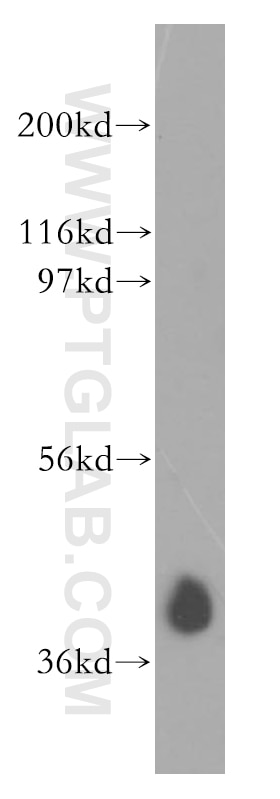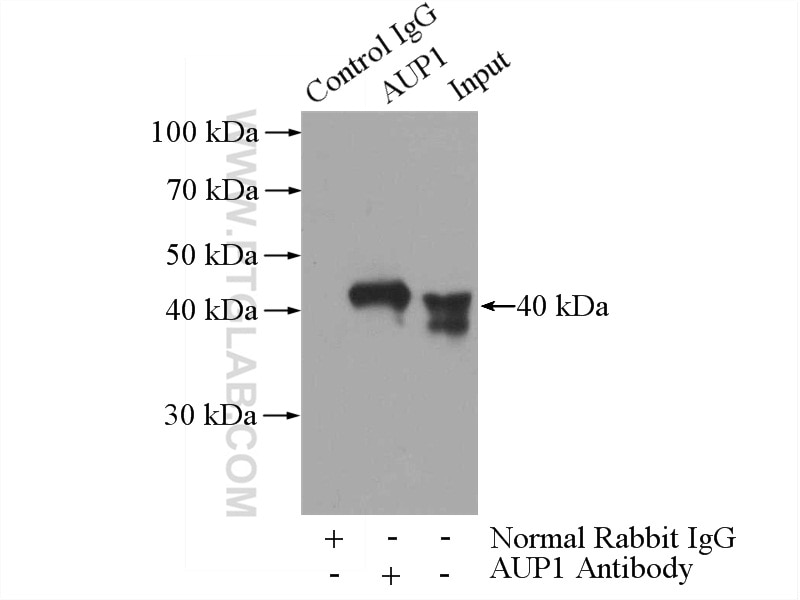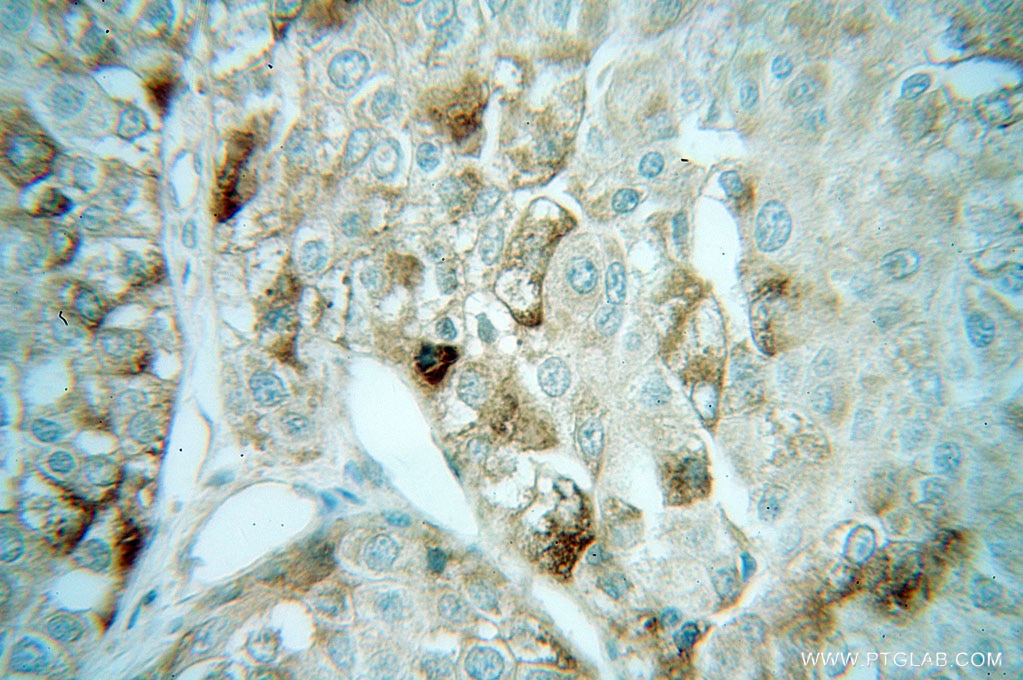Anticorps Polyclonal de lapin anti-AUP1
AUP1 Polyclonal Antibody for WB, IP, IF, IHC, ELISA
Hôte / Isotype
Lapin / IgG
Réactivité testée
Humain, rat, souris
Applications
WB, IHC, IF/ICC, IP, ELISA
Conjugaison
Non conjugué
N° de cat : 13726-1-AP
Synonymes
Galerie de données de validation
Applications testées
| Résultats positifs en WB | cellules K-562, cellules HEK-293, cellules Jurkat |
| Résultats positifs en IP | cellules HEK-293 |
| Résultats positifs en IHC | tissu de cancer du foie humain il est suggéré de démasquer l'antigène avec un tampon de TE buffer pH 9.0; (*) À défaut, 'le démasquage de l'antigène peut être 'effectué avec un tampon citrate pH 6,0. |
| Résultats positifs en IF/ICC | cellules A431 |
Dilution recommandée
| Application | Dilution |
|---|---|
| Western Blot (WB) | WB : 1:500-1:2000 |
| Immunoprécipitation (IP) | IP : 0.5-4.0 ug for 1.0-3.0 mg of total protein lysate |
| Immunohistochimie (IHC) | IHC : 1:20-1:200 |
| Immunofluorescence (IF)/ICC | IF/ICC : 1:10-1:100 |
| It is recommended that this reagent should be titrated in each testing system to obtain optimal results. | |
| Sample-dependent, check data in validation data gallery | |
Applications publiées
| WB | See 4 publications below |
| IF | See 1 publications below |
Informations sur le produit
13726-1-AP cible AUP1 dans les applications de WB, IHC, IF/ICC, IP, ELISA et montre une réactivité avec des échantillons Humain, rat, souris
| Réactivité | Humain, rat, souris |
| Réactivité citée | Humain |
| Hôte / Isotype | Lapin / IgG |
| Clonalité | Polyclonal |
| Type | Anticorps |
| Immunogène | AUP1 Protéine recombinante Ag4680 |
| Nom complet | ancient ubiquitous protein 1 |
| Masse moléculaire calculée | 416 aa, 45 kDa |
| Poids moléculaire observé | 40 kDa |
| Numéro d’acquisition GenBank | BC033646 |
| Symbole du gène | AUP1 |
| Identification du gène (NCBI) | 550 |
| Conjugaison | Non conjugué |
| Forme | Liquide |
| Méthode de purification | Purification par affinité contre l'antigène |
| Tampon de stockage | PBS avec azoture de sodium à 0,02 % et glycérol à 50 % pH 7,3 |
| Conditions de stockage | Stocker à -20°C. Stable pendant un an après l'expédition. L'aliquotage n'est pas nécessaire pour le stockage à -20oC Les 20ul contiennent 0,1% de BSA. |
Informations générales
AUP1 (Ancient ubiquitous protein 1) is a protein associated with lipid metabolism, which is widely expressed on the surface of ER and Lipid droplets, involved in the degradation of misfolded proteins through autophagy (PMID: 37029364). In addition, AUP1 also controls lipid synthesis as it induces ubiquitination and the subsequent degradation of several key regulators of lipid biosynthesis, such as the cholesterol biosynthetic enzyme 3-hydroxy-3-methylglutaryl-coenzyme A reductase (PMID: 28330944).
Protocole
| Product Specific Protocols | |
|---|---|
| WB protocol for AUP1 antibody 13726-1-AP | Download protocol |
| IHC protocol for AUP1 antibody 13726-1-AP | Download protocol |
| IF protocol for AUP1 antibody 13726-1-AP | Download protocol |
| IP protocol for AUP1 antibody 13726-1-AP | Download protocol |
| Standard Protocols | |
|---|---|
| Click here to view our Standard Protocols |
Publications
| Species | Application | Title |
|---|---|---|
Mol Biol Cell Lipid disequilibrium disrupts ER proteostasis by impairing ERAD substrate glycan trimming and dislocation. | ||
PLoS One Chlamydia trachomatis Infection Leads to Defined Alterations to the Lipid Droplet Proteome in Epithelial Cells. | ||
Mol Biol Cell A VCP inhibitor substrate trapping approach (VISTA) enables proteomic profiling of endogenous ERAD substrates. | ||
Mol Cell Genome-wide CRISPR Analysis Identifies Substrate-Specific Conjugation Modules in ER-Associated Degradation. | ||
Comput Struct Biotechnol J Featured interactome of homocysteine-inducible endoplasmic reticulum protein uncovers novel binding partners in response to ER stress |








